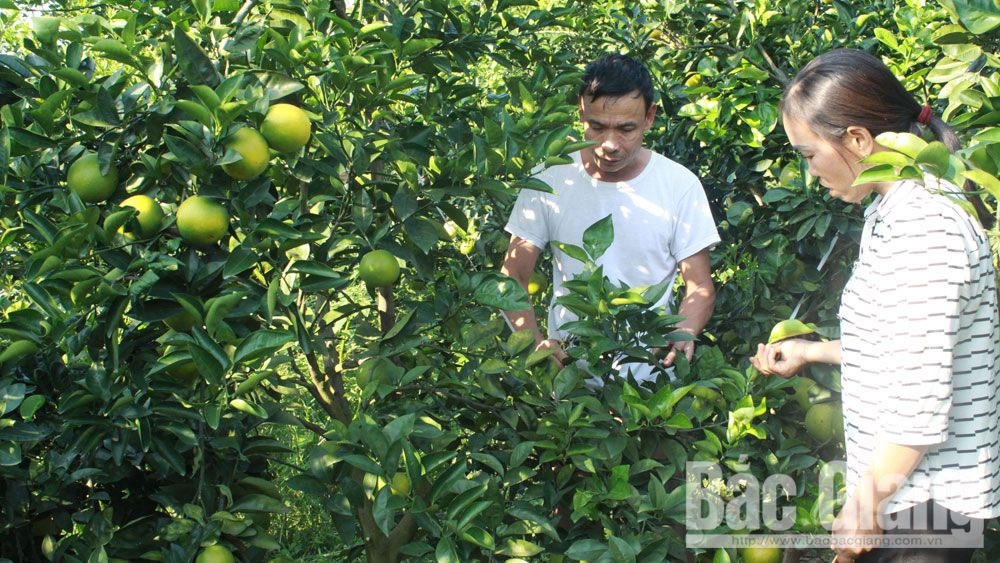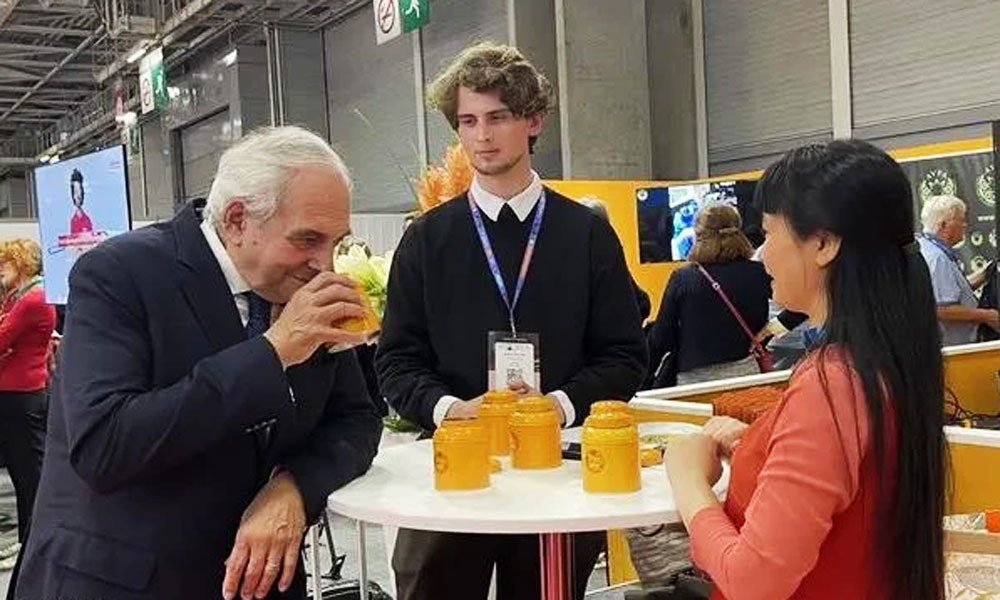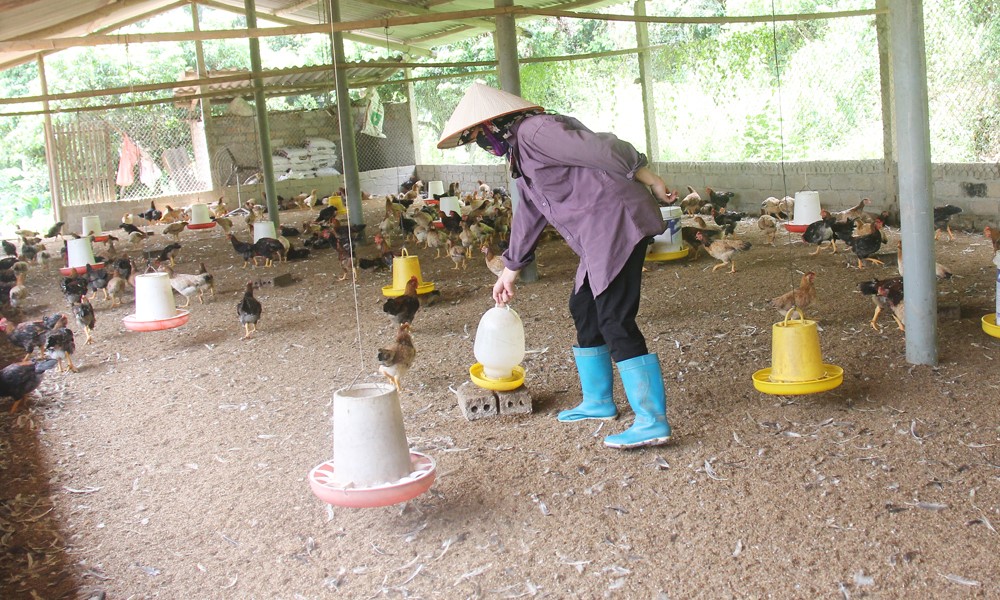Prospects from disease-free orange intensive farming model
Changing production thinking
With the advantage of having a large fruit tree-growing area, in early 2017, the family of Nguyen Quang Huy in Truong Thinh village, Quang Thinh commune planted 600 CS1 and V2 orange trees, using drip irrigation technology under the project. During the planting and caring process, he was instructed to apply VietGAP standard, using only pesticides in the permitted list in combination with drip irrigation system. The orange trees now grow well, full of fruits (from 15-20 kg per tree), with beautiful appearance and delicious taste.
 |
|
Pham Huy Nho in Truong Thinh village introduces the CS1 orange planting model to officials of the Farmers Association of Quang Thinh commune (Lang Giang district). |
Like Huy's, Pham Huy Nho's family (in the same village) has participated in the project, growing CS1 orange trees on an area of 6,000sq.m. Earlier, he boldly destroyed the old orange area to grow new varieties. The new orange trees are grafted ones, 25cm or more in height, with strong growth and no signs of dangerous pests and diseases. "This year, the trees began to bear fruit, reaching about 2 tonnes, with the selling price of 15,000- 20,000 VND per kg. I am very excited," said Nho.
The project "Building the model of intensive farming of V2 and CS1 disease-free orange varieties in Lang Giang district" has been implemented in Quang Thinh commune with the participation of 35 households, covering an area of 15 hectares, including 10 hectares of early-ripen CS1 orange, 5 hectares of V2 late-ripen orange. The project also installed Netafim Israel drip irrigation system (Israeli technology) for 3 hectares in two families; trained five grassroots-level technicians and 200 people on orange intensive farming techniques; operated and adjusted drip irrigation system in combination with fertilizing.
Duong Xuan Thuong, a project representative, said that V2 and CS1 orange varieties are disease-free, with clear origin and many strengths such as high yield and fruit quality, high resistance, few seeds and good fruit juice quality. They can be eaten when they are fresh or processed.
Notably, the application of drip irrigation technology increases productivity by 20-30 percent while saving 40-60 percent of irrigation water and 20-30 percent of fertilizer compared to the traditional way. In particular, the CS1 orange is ripen one month earlier the main crop oranges and the V2 orange is ripen two months later than the main crop oranges, thus facilitating sales.
The institute has closely monitored and guided the process of caring and using plant protection drugs in compliance with the standards. In addition, it has also supported the use of drip irrigation system combined with providing nutrition to help the product taste delicious and meet VietGAP standard.
Forming concentrated growing area
Many years ago, orange trees were grown in the area of Bo Ha (Yen The district). Lang Giang district had about 100 hectares. During the cultivation process, due attention was not paid to intensive farming techniques as well as keeping good seeds, the orange growing area gradually shrank, with a lack of disease-free varieties. Farmers did extensive farming, with low productivity and quality. Before the project was implemented, the whole district had about 80 hectares of Vinh and Canh oranges...
In order to stabilize and zone off a citrus production area, key communes have developed plans and mechanisms to support farmers. Nguyen Thi Bich, Chairwoman of the Quang Thinh communal Farmers' Association, said besides the implementation of the project, the commune has regularly organised training courses on the production process and cooperated with companies to help farmers buy fertilizer, pesticides and seedlings with late payment... Therefore, households have gradually produced oranges in a concentrated area, towards VietGAP and GlobalGAP standards.
Reportedly, the People's Committee of Lang Giang district has issued a plan to implement the zoning of a citrus fruit area by 2025. Accordingly, the district strives to have 280 hectares of citrus trees. Six communes are identified for concentrated planting: Huong Son, Quang Thinh, Nghia Hoa, Nghia Hung, Dao My, Tien Luc, with 100 hectares of orange (70 percent meeting VietGAP standard) and the rest grapefruit and lemon. Hoang Van Trinh, Chairman of the Quang Thinh communal People's Committee, said that the commune is currently introducing the model to households to expand intensive cultivation of the two orange varieties.
The initial success of the project is the premise for farmers in orange growing communes of Lang Giang to apply technology to improve product quality, thus increasing income for growers.
Hoang Thoa- Cong Doanh
 Bắc giang
Bắc giang











Reader's comments (0)